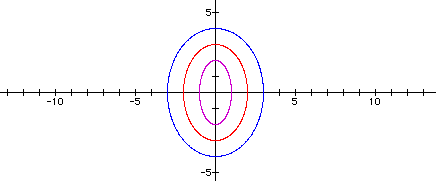
Let a=b , for values 1,2, and 3:

Obviously, in this case we simply get circles having radius a (or b).
Let a<b, for values 1,2,3, and 4:

In this case, we see that we get elliptical graphs with a vertical major axis, which makes sense. If when a=b we get circles, we should expect to get ellipses with a vertical major axis when a<b. Just to look ahead, I expect to get ellipses with a horizontal major axis when a>b. Let's see:

It turned out just as I expected. Let's move on.